Why Emissivity Matters with Infrared Temperature Measurements
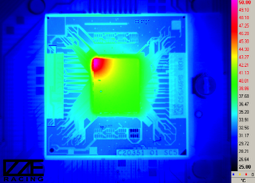
Below is a slide illustrating how temperature is computed using infrared sensors and why the effective emissivity (ε) of the target (e.g., tyre) is so important. This is exactly why our sensors have an adjustable emissivity. Note that transmissivity (τ) increases with distance but can usually be ignored with our tyre temperature sensors provided the standoff distance (distance from tyre to sensor) is so short and τ ~ 1
A practical example is shown in the second slide, showing how non-uniformities in object emissivity results in significant temperature measurement errors. This temperature map of an Intel CPU die with local hotspot heating was captured using a $200,000 research-grade FLIR camera. The actual temperature...
PnP Tire Temperature Sensor Kit
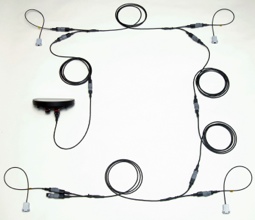
Here’s a completed PnP Tire Temperature Sensor Kit for an AiM system with a “motorsport-grade” wiring harness.
The harness can be customized to meet your specific requirements, such as integrated voltage regulator (convert 6-36V input to 5V for sensors), custom lengths, additional branches for brake temperatures, strain gauges, IMU’s, laser ride height sensors, etc.
While we are capable of building relatively simple harnesses, we highly recommend contacting Race Spec for your harness needs. Joel is an incredible talent; the quality & reliability of his work speaks for itself.
CAN 24-Bit Strain Gauge & Load Cell Amplifier
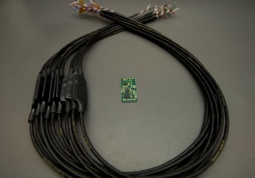
Here’s a small Batch of CAN 24-Bit Strain Gauge & Load Cell Amplifiers.
This was – by far – the most challenging PCB we've ever designed. Mapping out and directing return currents from high-speed digital traces was imperative for us to reach our target RMS noise of 750 nanovolts at 100Hz in a mixed signal PCB. Variants of this PCB will be used in many more future projects (e.g., the laser ride height sensor), as 24-bit ADC’s have many practical applications.
In the future, we may offer a strain gauge mounting and calibration process, as we understand this isn’t a trivial task – though it's something every mechanical/civil engineer should know how to do. Strain gauges are incredibly useful and the list of their applications is endless. Knowledge...
Discounted Infrared Temperature Sensors
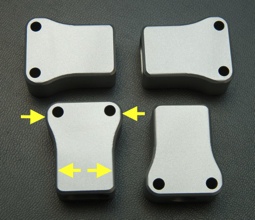
We have some infrared temperature sensor enclosures with some minor aesthetic defects (rounded chamfered edges, surface finish non-uniformities, light scratches) that don't pass our quality standards.
We'll let these sensors go for $200 each (4, 8, or 16-channels, 60-degree FOV, tire or brake). $160 for FSAE / Formula Student teams. Contact us to place an order.
Why a Brake Rotor's Pressure & Temperature Distribution can Alternate
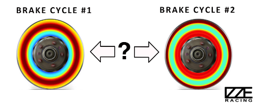
Video explaining why a brake rotor's pressure & temperature distribution can alternate.
This phenomenon highly depends on the brake caliper design, pad design & materials, and pad wear. Changing from Pad A to Pad B can completely suppress this behavior. When it comes to pad design, the key is to mitigate thermomechanical convex bending of the pad; this can be done by minimizing thermal gradients in the brake pad and minimizing differences in the coefficient of thermal expansion for the backing plate & pad material. Increasing the thermal diffusivity of the brake pad can minimize thermal gradients.
Why Measure Tire Temperature?
Tire temperature is one of the most important parameters to measure when it comes to optimizing tire performance and developing accurate tire models. The traditional approach of measuring tire temperatures with pyrometers is useful for evaluating the average temperature behavior but it does not represent the actual surface temperature or contain information about the dynamic behavior. Tire surface temperature changes rapidly with vertical, lateral (cornering), and longitudinal (braking/accelerating) forces and the only way to properly acquire surface temperature data is with multichannel infrared temperature sensors. Remember, everything begins and ends at the interface between the tire and the road.
Given below are some general trends in tire temperature...
Tire Temperature Profile with One Channel

Temperature vs. time plots are the easiest way to analyze multichannel tire temperature data and are useful for evaluating peak temperatures and time-based behavior. However, this method is not ideal for evaluating a tire’s lateral temperature profile – especially when you have up to 16 temperature channels per tire. Bar plots (one per temperature channel) and color contour maps are far more effective for this purpose but are limited to advanced and expensive analysis software.
Instead of needing expensive analysis software, we’ve modified our sensor’s software so it effectively outputs the tire’s 16-point temperature profile at a given moment in time with just ONE temperature channel and can be analyzed with ANY analysis software. An example is shown below,...
Circuit Board Assembly - Pick and Place Machine
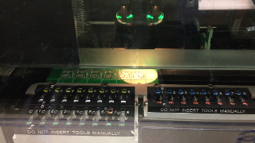
Here's a video of the circuit board assembly for our Infrared Tire Temperature Sensors.
Done here in the USA by the great folks at Worthington Assembly Inc. and CircuitHub.
Bench Test of 8-Channel Tire Temp Sensor with Autosport Labs RaceCapture/Pro
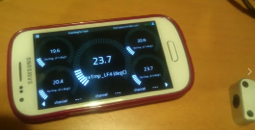
Race-Electronic bench testing our 8-Channel Tire Temperature Sensor with an Autosport Labs RaceCapture/Pro.
Here is the Lua Script for the 8-Channel sensor, provided by Race-Electronic.
Calibration Test for 16-Channel Infrared Tire Temperature Sensor
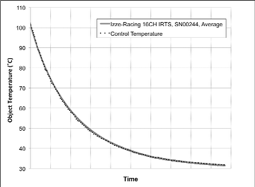
Random calibration test of one of our 16-Channel Infrared Tire Temperature Sensors (SN 00244). Test object is a tire with a uniform temperature & emissivity, subjected to a temperature sweep from 100 to 30˚C, and the control temperature is measured using an E-type thermocouple with a National Instruments high-accuracy thermocouple DAQ. Results are well within the limits of error.
Our lead engineer is actually a thermal engineer, having done many years of R&D work for the DoD using $200K+ IR cameras. Rest assured, we know what we're doing.
Infrared Temperature Sensors for MoTeC Hundred Series ECU's

We're currently developing a custom version of our multichannel tire/brake temperature sensors for MoTeC Hundred Series ECU's.
See the preliminary datasheet for more details.
Blog – Updates, Technical Articles, and Ramblings
